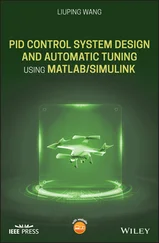Physical, biological, and mental biomarkers of the human body can well describe its state. Body movement, heart rate variability, and the brain responses to various internal and external stimuli can reveal the symptoms and causes of many abnormalities in the state of human body. To differentiate these abnormalities and disease indicators, however, a variety of tests and measurements by means of suitable sensors need to be undertaken. These indicators can be quantified using data-processing and intelligent systems for better and quicker diagnosis of the abnormalities in humans. Although sensors and sensory networks have facilitated recording and quantification of many of the states indicating variables, there is still a long way to go to cover all factors involved in the full recognition of human body states.
1 1 Lee, T.K.M., Belkhatir, M., and Sanei, S. (2014). A comprehensive review of past and present vision-based techniques for gait recognition. Multimedia Tools and Applications 72 (3): 2833–2869.
2 2 Lee, T.K.M., Belkhatir, M., Lee, P.A., and Sanei, S. (2008). Nonlinear characterisation of fronto-normal gait for human recognition. In: Advances in Multimedia Information Processing – PCM 2008, Lecture Notes in Computer Science (eds. Y.-M.R. Huang et al.), 466–475. Berlin: Springer-Verlag.
3 3 Caldas, R., Mundt, M., Potthast, W., Buarque de Lima Neto, F., and Markert, B. (2017) A systematic review of gait analysis methods based on inertial sensors and adaptive algorithms. Gait Posture 57: 204–210.
4 4 Jarchi, D., Wong, C., Kwasnicki, R.M. et al. (2014). Gait parameter estimation from a miniaturised ear-worn sensor using singular spectrum analysis and longest common subsequence. IEEE Transactions on Biomedical Engineering 61 (4): 1261–1273.
5 5 Kumar, P., Mukherjee, S., Saimi, R. et al. (2019). Multimodal gait recognition with inertial sensor data and video using evolutionary algorithm. IEEE Transactions on Fuzzy Systems 27 (5): 956–965.
6 6 Zhou, X. and Bhanu, B. (2006). Feature fusion of face and gait for human recognition at a distance in video. Proceedings of the 18th International Conference on Pattern Recognition 4: 529–532.
7 7 Bazin, A. I. (2006) On probabilistic methods for object description and classification. PhD thesis, University of Southampton.
8 8 Andrews, K. and Steward, J. (1978). Stroke recovery: he can but does he? Rheumatology 16 (1): 43–48.
9 9 Lee, T. K. M., Gan, S.S.W., Sanei, S., and Kouchaki, S., (2013) Assessing rehabilitative reach and grasp movements with singular spectrum analysis. Proceedings of the 21st European Signal Processing Conference (EUSIPCO), Marrakech, Morocco (9–13 September 2013).
10 10 Jenkins, K.J., Correa, A., Feinstein, J.A. et al. (2007). Noninherited risk factors and congenital cardiovascular defects: current knowledge: American Heart Association Council on cardiovascular disease in the young: endorsed by the American Academy of Pediatrics. Circulation 115 (23): 2995–3014.
11 11 Mendis, S. and Puska, P. (2011). Global Atlas on Cardiovascular Disease Prevention and Control (ed. World Health Organization), 3. World Health Organization in collaboration with the World Heart Federation and the World Stroke Organization.
12 12 Shelat, A. M., (2016) Electromyography, https://medlineplus.gov/ency/article/003929.htm(accessed 25 November 2019).
13 13 Longo, G. and Montévil, M. (2014). Perspectives on Organisms. Springer.
14 14 Bu, Z. and Callaway, D.J. (2011). Proteins MOVE! Protein dynamics and long-range allostery in cell signalling. Advances in Protein Chemistry and Structural Biology 83: 163–221.
15 15 Cotsapas, C. and Haer, D.A. (2013). Immune-mediated disease genetics: the shared basis of pathogenesis. Trends in Immunology 34: 22–26.
16 16 Meroni, P.L. and Schur, P.H. (2010). Ana screening: an old test with new recommendations. Annals of the Rheumatic Diseases 69: 1420–1422.
17 17 Sanei, S. (2013). Adaptive Processing of Brain Signals. Wiley.
18 18 Hiemann, R., Hilger, N., Sack, U., and Weigert, M. (2006). Objective quality evaluation of fluorescence images to optimize automatic image acquisition. Cytometry Part A 69: 182–184.
19 19 Soda, P., Rigon, A., Afeltra, A., and Iannello, G. (2006). Automatic acquisition of immunofluorescence images: algorithms and evaluation. In: 19th IEEE International Symposium on Computer-Based Medical Systems, CBMS, 386–390. IEEE.
20 20 Huang, Y.-L., Chung, C.-W., Hsieh, T.-Y., and Jao, Y.-L. (2008). Outline detection for the HEp-2 cell in indirect immunofluorescence images using watershed segmentation. In: 2008 IEEE International Conference on Sensor Networks, Ubiquitous and Trustworthy Computing (SUTC'08), 423–427. IEEE.
21 21 Huang, Y.-L., Jao, Y.-L., Hsieh, T.-Y., and Chung, C.-W. (2008). Adaptive automatic segmentation of HEp-2 cells in indirect immunofluorescence images. In: 2008 IEEE International Conference on Sensor Networks, Ubiquitous and Trustworthy Computing (SUTC'08), 418–422. IEEE.
22 22 Foggia, P., Percannella, G., Soda, P., and Vento, M. (2010). Early experiences in mitotic cells recognition on HEp-2 slides. In: IEEE 23rd International Symposium on Computer-Based Medical Systems (CBMS), 38–43. IEEE.
23 23 Soda, P. and Iannello, G. (2006). A multi-expert system to classify fluorescent intensity in antinuclear autoantibodies testing. In: 19th IEEE International Symposium on Computer-Based Medical Systems (CBMS 2006), 219–224. IEEE.
24 24 Murray, E.D., Buttner, N., and Price, B.H. (2012). Depression and psychosis in neurological practice. In: Neurology in Clinical Practice, 6e (eds. W.G. Bradley, R.B. Daroff, G.M. Fenichel and J. Jankovic). Butterworth Heinemann.
25 25 Sattar, H. (2011). Fundamentals of Pathology. Pathoma.
26 26 Escudero, J., Sanei, S., Jarchi, D. et al. (2011). Regional coherence evaluation in mild cognitive impairment and Alzheimer's disease based on adaptively extracted magnetoencephalogram rhythms. Physiological Measurements 32 (8): 1163–1180.
27 27 National Institute of Neurological Disorders and Stroke (NINDS). (2016). Hydrocephalus Fact Sheet. https://www.ninds.nih.gov/Disorders/Patient-Caregiver-Education/Fact-Sheets/Hydrocephalus-Fact-Sheet(accessed 25 November 2019).
28 28 Dayalu, P. and Albin, R.L. (2015). Huntington disease: pathogenesis and treatment. Neurologic Clinics 33 (1): 101–114.
29 29 Caron, N.S., Wright, G.E.B., and Hayden, M.R. (1998). Huntington Disease. In: GeneReviews® (eds. M.P. Adam, H.H. Ardinger, R.A. Pagon, et al.). Seattle: University of Washington.
30 30 Frank, S. (2014). Treatment of Huntington's disease. Neurotherapeutics 11 (1): 153–160.
31 31 National Institute of Neurological Disorders and Stroke (NINDS). (2019). Huntington's Disease Information Page. https://www.ninds.nih.gov/Disorders/All-Disorders/Huntingtons-Disease-Information-Page(accessed 25 November 2019).
32 32 World Health Organization (2020). Headache disorders. https://www.who.int/news-room/fact-sheets/detail/headache-disorders(accessed 1 January 2020).
33 33 Aminoff, M.J., Greenberg, D.A., and Simon, R.P. (2009). Clinical Neurology, 7e. New York: Lange Medical Books/McGraw-Hill.
34 34 Headache Classification Subcommittee of the International Headache Society (2004). The international classification of headache disorders: 2nd edition. Cephalalgia 24 (Suppl 1): 9–160.
35 35 Pryse-Phillips, W. (2003). Companion to Clinical Neurology, 2e, 587. Oxford: Oxford University Press.
36 36 Piane, M., Lulli, P., Farinelli, I. et al. (2007). Genetics of migraine and pharmacogenomics: some considerations. Journal of Headache and Pain 8 (6): 334–339.
37 37 National Institute of Neurological Disorders and Stroke (NINDS). 2019. NINDS Multiple Sclerosis Information Page. https://www.ninds.nih.gov/Disorders/All-Disorders/Multiple-Sclerosis-Information-Page, (accessed 25 November 2019).
Читать дальше












